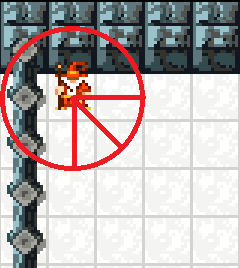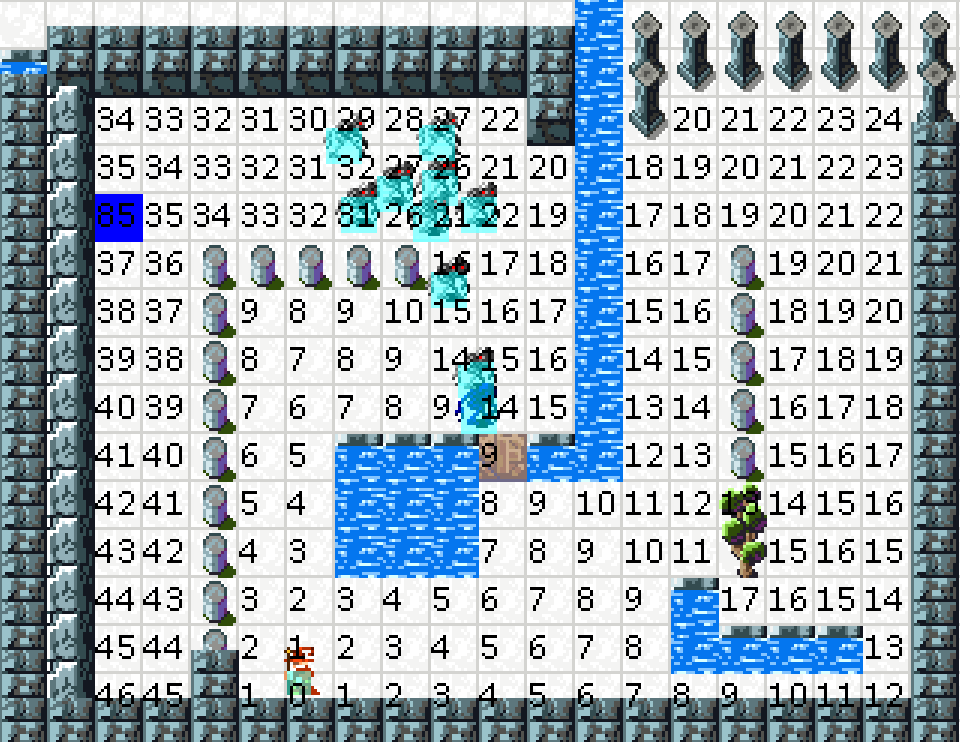Pixel accurate movement has taken a bit longer than I thought it would. I was expecting about one week to get things operational–I think I got 75% of the way there in a week, but now it’s the final 20% that could take up 80% of the time.
Pathfinding and general movement works, but needs hacks to work properly. I created a system to help the monsters file through doorways without getting stuck, but it still relies on a system that temporarily disables clipping for monsters that get stuck together for too long. That system works great for declogging the doorways, but when the monsters get close to the player and start phasing through one another, they just stack in a jumbled, writhing mess. I really want it to look like Gauntlet, with mobs flowing gracefully around corners and stacking into nice grids.
I think my collision detection will also have to move from floating point to fixed point, because accumulation errors are probably one of the causes of clipping bugs among monsters. That change will take at least two days, if not more.
I’m pretty confident it will have been worth the trouble once everything is together. For now, it’s in that purgatorial state where the code is broken and ugly… not a place I like to leave things.


